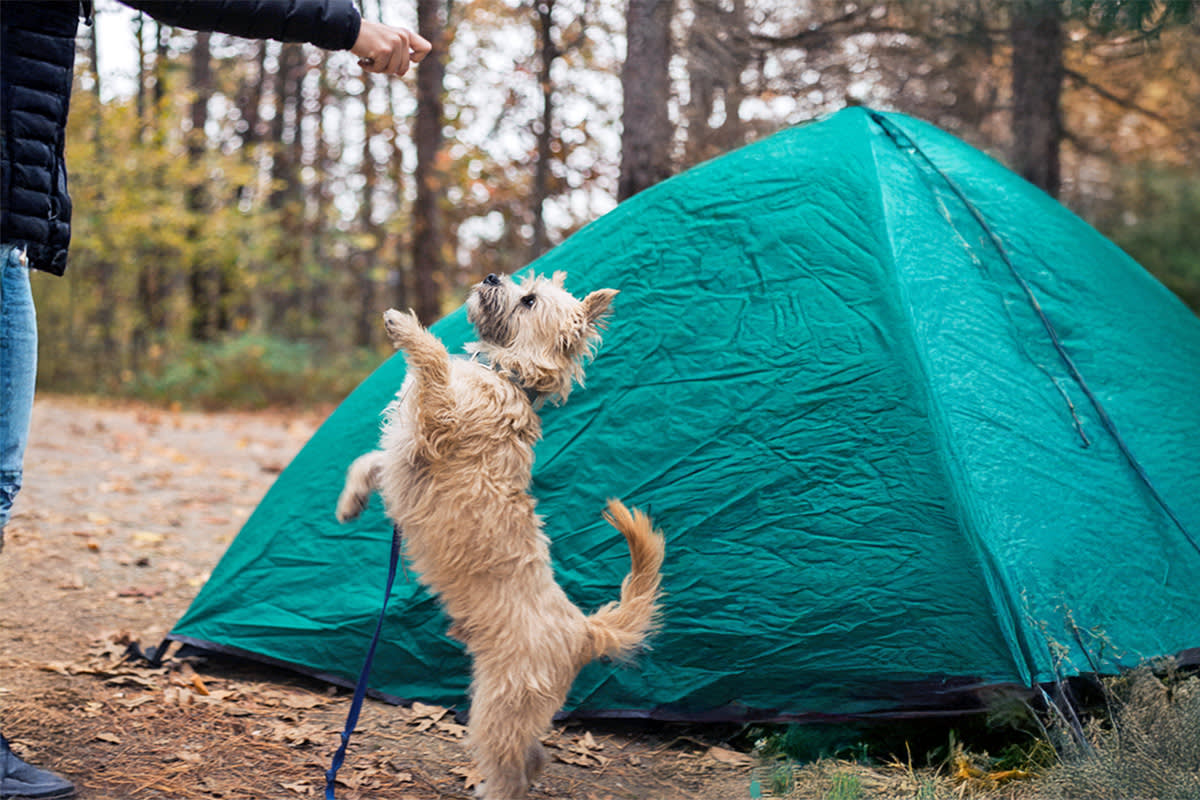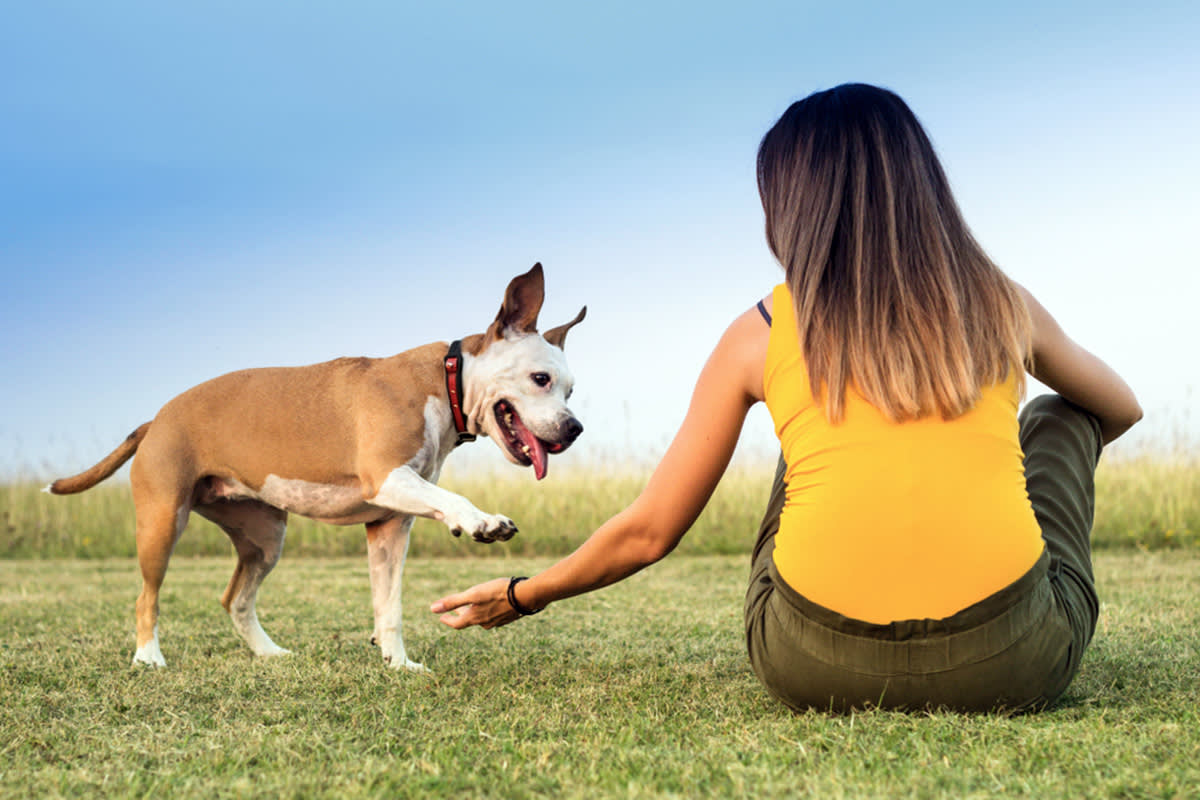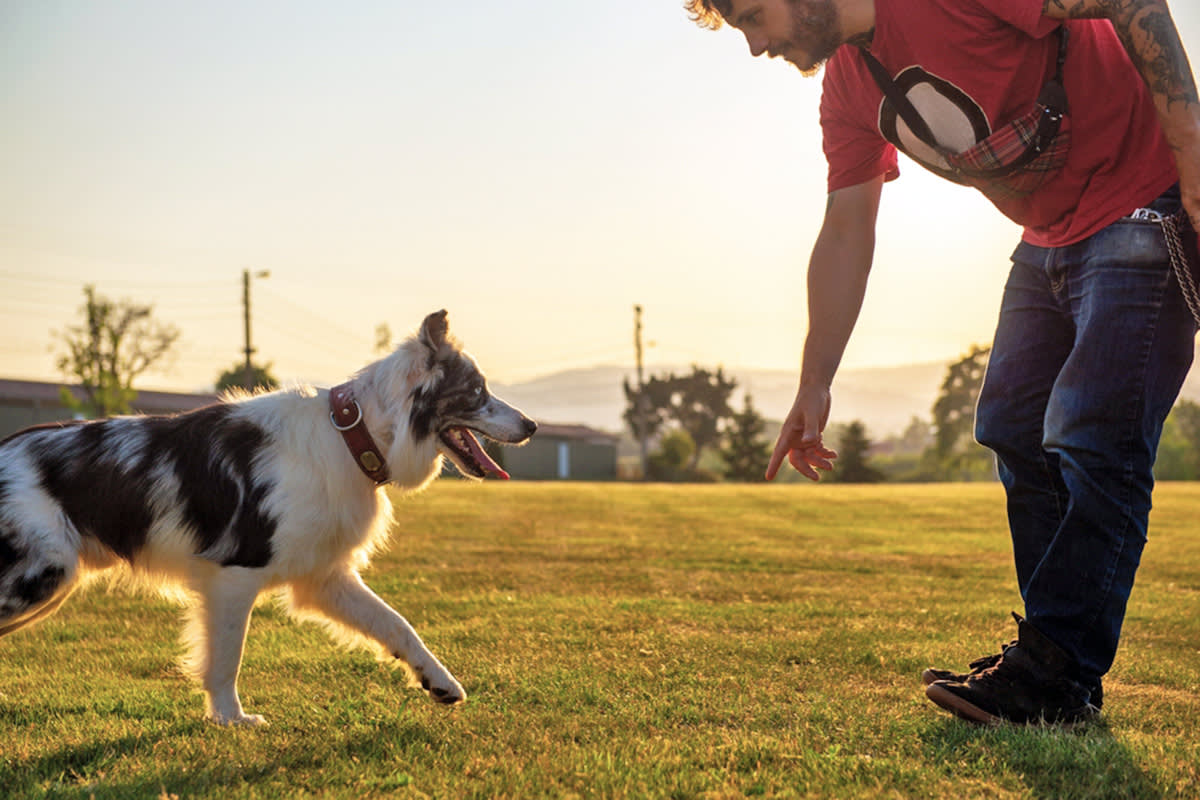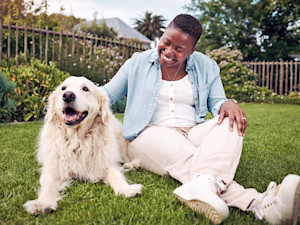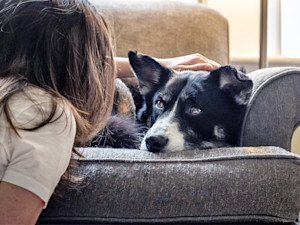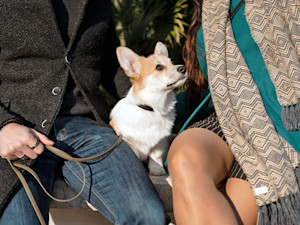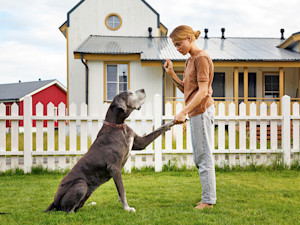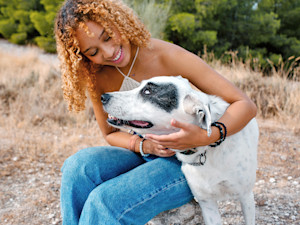Dogs Are Creative Geniuses, Study Says
They are giving dolphins a run for their money in the smart department.
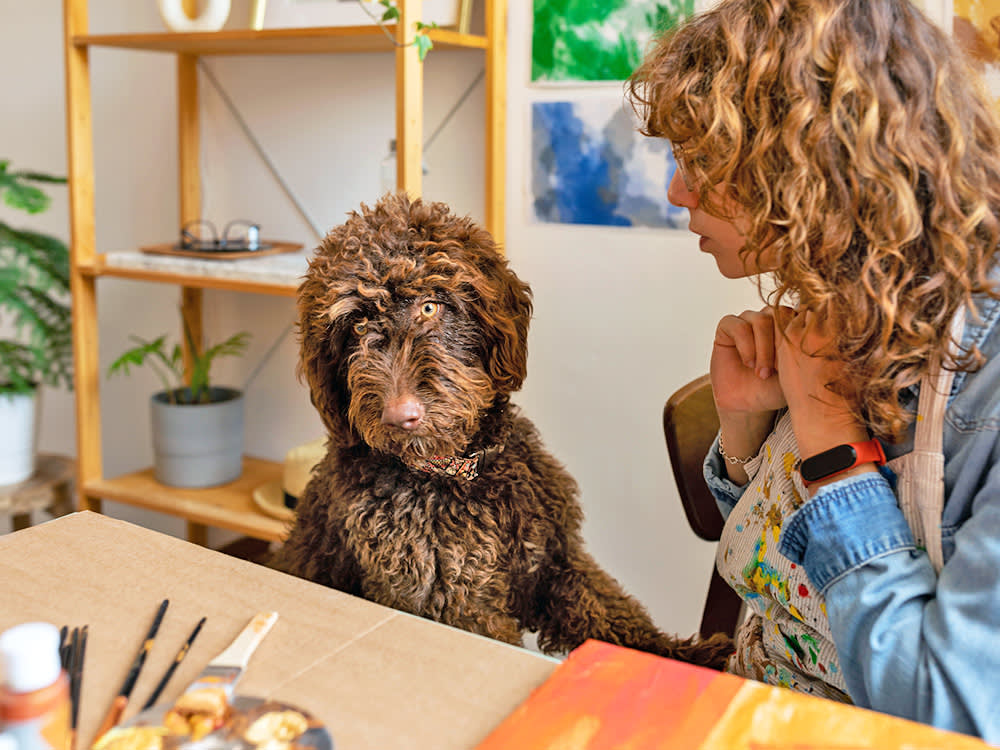
Share Article
Our dogs are incredibly creative. That doesn’t mean they can paint a beautiful watercolor or landscape the garden, though either accomplishment would be impressive. For what it’s worth, we think of them as prodigies — simply because we think everything they do is amazing.
In this context, however, creativity means flexibility, problem solving, and greater cognitive skills. When dogs can show off behaviors that are new to them, it’s an indication of the flexibility necessary to deal with the unexpected challenges of life. Once we get an idea of how our pups adapt and learn new things, we get to know our best friends even better. Who’s in?
What research says about this
A November 2024 studyopens in new tab in the journal Animal Behavior and Cognition found that dogs can be trained to exhibit creative behavior when someone gives them the cue “create.” Not a lot of species can do something new when told to, but dogs are one of them. They can be taught to understand that the concept of “create” means to perform a new behavior.
In the study, researchers considered a behavior to be new if it had not been performed in the current training session, and if it was not already linked with a specific cue. Each time they were given the cue “create,” the goal was for the dogs to exhibit spontaneity by doing something that was new within five seconds. That required being able to perform a behavior and to remember what they had previously done, so they didn’t repeat it.
How much do you spend on your pet per year?

Each dog in the study participated in six test sessions during which the trainer asked them to “create” 16 separate times. Dogs were creative about three-quarters of the time in response to the cue “create.” They produced an average of nearly 12 new behaviors during the 16 opportunities they had in each test session. This included: lifting their paws, scooting backward, hopping on their back legs, shuffling their paws, barking, touching the trainer’s knee with their paw, stepping forward, and putting their head down.
The dogs in this study were successfully innovative in ways comparable to dolphins and porpoises, widely considered to be two of the smartest animals. But our best friends are up there, too. The more experts look into dogs’ brains, the more fascinated they are with them. Studying their creativity allows them to show us more about what they can do, and it can also enhance their lives.
How to get creative with your dog
We can tap into our dogs’ extraordinary creativity by giving them a treat for doing something new such as lifting a paw, walking on their hind legs (if your vet approves!), resting their head in your lap, and going under the coffee table or under your outstretched leg.
When dogs learn that new behavior is valued rather than discouraged, they will become more likely to innovate. Creativity can also be expressed with problem solving, so puzzle toys or DIY options are great. Here’s a DIY idea: Wrap treats in an old sock inside a cardboard box; this gives your dog the opportunity to look for the buried treasure. Giving our dogs outlets for their creativity is good for their brains, and most dogs have fun with it, too.
Allowing dogs to freestyle a bit, like the researchers did in this study, is an effective way to offer enrichment, getting them to problem solve and use their brainsopens in new tab. Training dogs to innovate is more than just good fun or good research — it’s yet another way to make sure dogs are living the good life.

Karen B. London, PhD, CAAB, CPDT-KA
Karen B. London is a certified applied animal behaviorist (CAAB) and certified professional dog trainer (CPDT) who specializes in working with dogs with serious behavioral issues, including aggression. She has written for a variety of magazines including The Bark, Clean Run, and the APDT Chronicle of the Dog, and has published in scientific journals including Behavioral Ecology and Sociobiology, Ethology, Ecology, and Evolution, the Journal of Insect Behavior, and Insectes Sociaux. She is the author of seven books about dog training and canine behavior, including the forthcoming My Dog's Mystery Adventure: And Other Stories From a Canine Behaviorist and Dog Trainer.
Related articles
![Woman outside her dog in the grass.]()
This Is Why Relationships With Dogs Are More Satisfying Than With Friends, Study Says
It’s just not that complicated.
![Dog petting dog while he stares at her from the couch.]()
Your Dog Is Judging You—Well, Only If She’s a Girl, Study Says
She is watching your every move.
![Cute Corgi dog eavesdropping on pet parents outside.]()
Our Dogs Totally Eavesdrop on Us, New Study Finds
They’re always listening.
![Woman training her Great Dane dog outside.]()
7 Dog-Training Myths—Busted by a Behaviorist
Training them to roll over is useless—and other falsehoods.
![Woman hugging her dog outside.]()
Your Dog Can Understand Your Facial Expressions, Study Says
And they love it when you smile.
